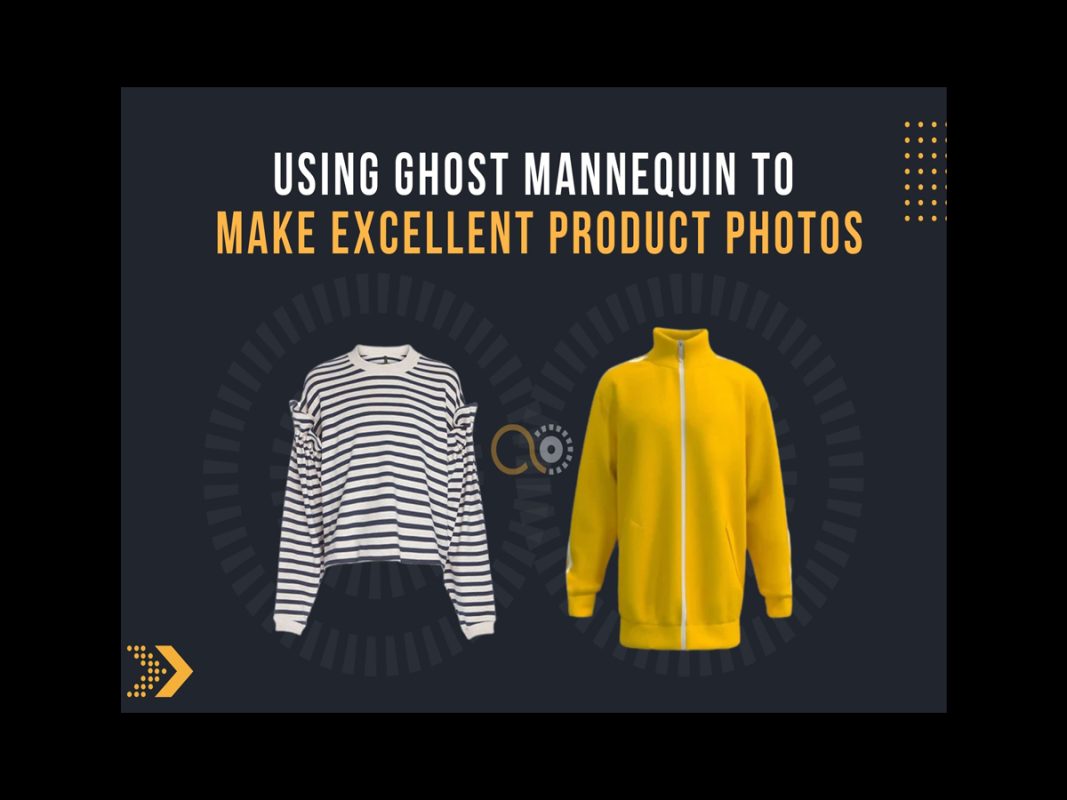Introduction
In today’s extremely modest e-commerce landscape, product photography is essential in charming potential customers and driving sales. Online shoppers trust visuals to make informed acquisition decisions, and excellent images can meaningfully affect their perceptions of a product’s value and trustworthiness. Among the many methods used in product photography, two vital concepts are neck joints and ghost mannequins. Let’s delve into these methods and understand how they can raise the visual appeal of your products.

Neck joints, also known as “invisible mannequin” or “360° photography,” are a clever way of giving garments and attire in a lifelike manner. The technique includes photographing a garment on a dummy and then removing the mannequin from the image throughout post-processing. The result is an ethereal, seamless picture of the clothing item as if it were fluctuating on an unseen body.
The loveliness of neck joints dishonesties in their aptitude to display the fit and drape of a garment, if potential buyers with a clearer sympathetic of how it would look on a natural person. By showcasing dissimilar angles and views, neck joint photography improves the customer’s visual knowledge and inspires sureness in the product’s design and quality.
Advantages of Neck Joints:
Realism: Neck joint imageries make an impression of a model wearing the garment, making it more relaxed for clientele to imagine themselves in it.
Versatility: This technique is appropriate for various apparel types, including shirts, dresses, blazers, and more.
Cost-Effective: Employing neck joints decreases the need for signing models, thereby reducing production costs.
Ghost Mannequins: Bringing Products to Life
Ghost mannequins, referred to as “hollow man” or “invisible mannequin” photography, focus on showing clothing items short of distractions, such as hangers or models. The process includes using a dummy that can be quickly revised during post-processing, leaving behind a clean, hollow-looking symbol of the garment.
Photographers can use ghost mannequins to highlight the product’s shape, texture, and features without any outside basics to draw care away from the main subject. This method gives the clothing a sense of depth and measurement, allowing customers to observe the product’s fit and project with greater clarity.
How is Ghost Mannequin Photography Different from Regular Product Photography?
The main change between Ghost Mannequin Photography and traditional product photography is using mannequins or hooks to create a 3D effect. Traditional product photography often includes flat-lay images or models tiring the product. Ghost Mannequin Photography permits a product to be showcased from all angles without any distractions. This unique technique makes it easier for customers to see the details of the product, such as texture, fit, and shape.
Preparing Your Garments for Ghost Mannequin Photography
To attain high-quality Ghost Mannequin photos, it is essential to prepare your garments appropriately. Here are some tips and rules to follow:
– Use a high-quality mannequin or hanger that matches the size and fit of the garment.
– Protection: The garment is clean and free of creases.
– Use pins or clips to control the fit of the clothing on the mannequin or hanger.
– Use proper illumination to improve the particulars of the garment.
Editing and Retouching Ghost Mannequin Photos
Editing and retouching are vital rudiments of Ghost Mannequin Photography. Here are some editing methods that can be used to improve the excellence of your photos:
– Use color alteration to safeguard precise color representation.
– Remove any blemishes or imperfections on the garment.
– Adjust the glooms and highlights to make a more truthful result.
– Add a drop shadow or reflection to make depth and measurement.
How to Create the Ghost Mannequin Effect
1. Choosing and Affectation a Model or Mannequin
One of the most common processes in fashion photography is to use models or mannequins to showcase each product’s unique shape and fit.
However, displaying the model or mannequin in every image is only sometimes accurate. Retailers occasionally opt to photograph their products being modeled, eliminate the models, and make the figures seem imperceptible later in Photoshop.

For smaller sellers who do the majority of their image excision themselves, eliminating models and dummies can be a problematic method to master.
To make the “ghost mannequin,” you must photograph your product worn by a model or a mannequin from multiple angles. The plus side is that you can use these photos in your product galleries alongside any “ghost” images you create.
2. Setup and Equipment
To perform the ghost mannequin technique, you need to be able to make high-quality photographs in a studio setting.

The lower the excellence of your photographs, the less application the ghost mannequin effect can add to those images. Camera and illumination techniques, equipment, and placement all play here, contingent on each specific product you’re shooting.
3. Photographing the Product
When snapping shirts, placing the camera straight level with the chest area is significant, while the camera should be located across from the hip area to photograph bottoms.

Using a telephoto zoom lens to imprisonment, your images can help to minimize alteration and deliver you with the litheness to change closer to smaller objects and move away from larger objects.
Make sure your studio shooting space is large enough to accommodate your camera and stand for imperceptible mannequin shoots: two studio lights and umbrellas spread evenly apart on either side of the product and backdrop.
3D image with the ghost mannequin technique:
First, click a front and back view of your product worn by your model or mannequin.
After that, style and hang your product on the part of the white foam board and click both the front and back views again; these foam board reports will permit you to comprise the inner areas of the garment once you trust the images together, as shown below.

Post-Processing Images: A Step-by-Step Guide
After taking the essential views, creating a ghost mannequin effect is quite simple –– given that you own the proper post-production software and your products have been appropriately snapped. You can also subcontract this excision work to professional editors and get back your ghost mannequin images in 24 hours, ready to sell.

Outsourcing this work may exclude your company a lot of time and deterrence in the long run, but if budget restraints need you to make the edits yourself, shadow these seven simple steps to make your ghost mannequin effect in Photoshop.
1. Open Your Files in Photoshop and Create Layers
First, opening the mannequin and foam board images in Photoshop is essential. Choose your mannequin copy and make a new background layer.

Fill that layer in with snow; it will be your overall background when finished. It’s also obliging to label your layers so that you can express them apart and remain prepared.
2. Use a Selection Tool in the Mannequin Image
Now, it’s time to choose the creation in your mannequin image. Zoom in tight and select your favorite selection tool: quick selection, lasso, or magic wand. All three can help you to achieve your desired selection. Remember that, in most cases, using a white background when shooting permits, you to eliminate the dummy quickly because of the color parting between the product and the environment.

3. Refine and Place Your Mask
Once you have designated the whole product, refine your mask so it is nice and tight, removing all the background and mannequin. This can be done using the “Refine Edge” tool in the “Select” menu. After that, click “OK” in the “Refine Edge” dialogue box and set a mask on your shirt layer. At this point, you can see your product fluctuating quickly on the white background you initially shaped. If essential, improve the mask and refine the product’s edges to give it a nice, clean look.
4. Rinse and Repeat Previous Steps with the Foam Board Image
Now it’s time to change gears and repetition of Steps 1, 2, and 3 on your foam board product image. This type of product copy may seem a little odd at first, but consuming one to work with is significant; photographing the product inside-out will permit you to show the inside back of the product, implementing the mannequin illusion. We have that ability, which will look great in the end! Create a new layer, first-rate the product, and generate and refine your mask.
5. Combine the Images
When both pictures contain tight, clean masks, drag the mask from your foam board and copy it to the photo of your ghost mannequin product image. Establish the layers so the foam board image is inferior to the mannequin image. Then, regulate aligning the foam board layer and its proportions so that it fits flawlessly behind the model layer, just below the shoulder, in a rounded curve.
6. Remove unnecessary objects from the Foam Board Layer
At this point, it’s an excellent idea to fleece your mannequin layer and brush out the extra parts of the foam board layer. You only need to keep that neckline threesome between the shoulders. It’s significant to remember to eliminate that piece in the foam board image because it’s previously in place in the mannequin shot. Once you’ve done this, double-check that your layers are clean enough and that nothing is out of alignment — particularly in the neck and shoulder area.
7. Add Shadows and Save
Finally, add a shadow amongst the two layers to apply depth, and save a copy of the Photoshop file with the rest of the layers complete, just to be safe.
Once you’ve protected the layer file, merge all the layers and save the copy again as a different file name. Now, the final step will make your product look expert and accurate.
If the excision job is done well, you will end up with an astonishing 3D effect like the ones below that will recover your product photography and assist you in raising sales for your online store.
Conclusion
In the lively world of e-commerce, faultless product photography is an inflexible aspect of a successful online business. Neck joints and ghost mannequins are influential tools that allow companies to showcase their products convincingly and engagingly, setting them apart from competitors.
By accepting these techniques, brands can effectively communicate their products’ features, fit, and style to potential customers, developing a sense of trust and dependability. As we adjust to the ever-changing digital landscape, investment in innovative product photography approaches will undoubtedly be a wise and profitable decision for any online shop.

